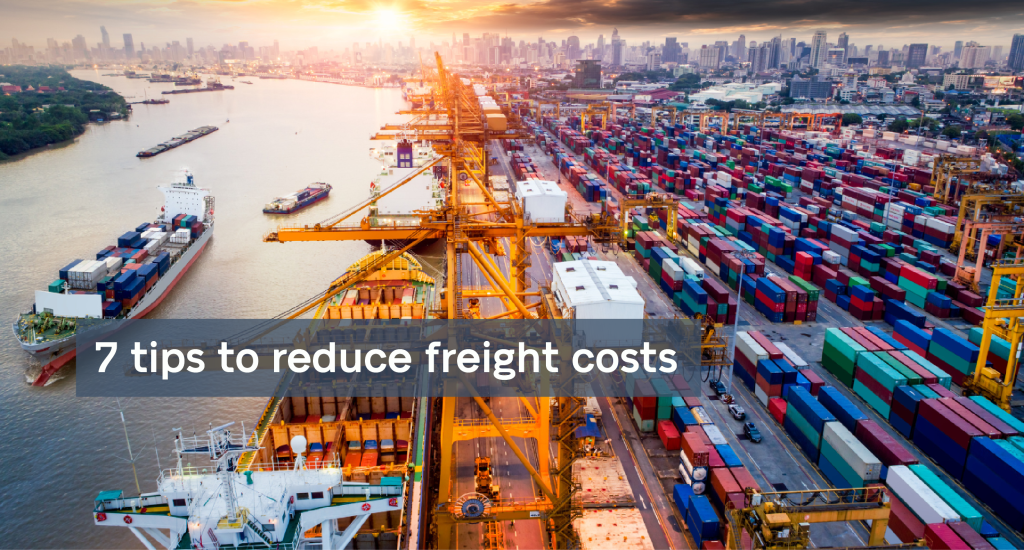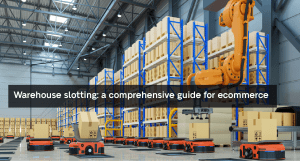Dear merchants, one of the most common questions we get asked is, “How can I reduce my freight costs?”. What you might not know yet is that you’re probably focusing on THE RATE which is actually the wrong aspect to concentrate on if you want to achieve substantial road freight savings.
Many business owners find negotiating freight rates a challenging and overwhelming task. Our advice is to consider key aspects, like choosing the right service, understanding your freight profile, and choosing the right freight rates and volume for long-term benefits. Additionally, as your business evolves, it is essential to continuously reassess your profile, carriers, and freight rates to ensure they remain aligned with your needs. Let’s explore seven simple practical strategies to help you lower your freight costs effectively.
Understanding freight costs
Before we dive deeper into the matter, let’s understand what freight costs are. Freight costs are all expenses related to carriers, including transportation fees, fuel surcharges, and carrier overheads. Freight costs typically include:
- Transportation costs: all expenses related to moving goods from location A to location B, like fuel, vehicle maintenance, and driver salary.
- Handling and packaging costs: all expenses related to loading, unloading, and packaging goods.
- Administrative costs: all expenses related to managing freight operations, like documentation, compliance, and salaries.
Now, let’s move to the practical part!
7 effective ways to reduce road freight costs
1. Make sure you’re using the full capacity of your vehicles
Simply put, freight capacity is the maximum amount of goods or cargo that can be transported by any given mode of transportation and logistics system within a specific time frame. Assessing capacity utilization is relevant especially if you have an in-house fleet or a dedicated fleet. Since capacity utilization is a determining element in supply chain management, check if you’re fully leveraging the carrying capacity of your vehicles. For instance, you might be paying a full truck rate for deliveries even though your truck isn’t always fully loaded or you might have an in-house fleet where only 50-60% of the truck’s space is utilized.
2. Leverage volume
If you have a larger business with multiple sites, consider leveraging your total shipment volume to get more convenient rates with carriers. Let’s say one site needs to move 10,000 pallets of products every month, but your whole business moves 30,000 pallets monthly, you can almost certainly negotiate a more cost-effective rate per pallet, thanks to your overall volume. This is because carriers often offer lower rates for larger volumes, as it provides them with more consistent and substantial business. Therefore, always remember to leverage your total shipping volume across all sites to maximize your negotiating power and achieve more cost-effective freight rates!
3. It’s not really about the rate itself
Don’t fixate on getting the lowest rate possible, it won’t get you very far. You’d be spending a lot of energy for the wrong aspect of the matter! It is more important to look for fair and reasonable rates, allowing both you and the carrier to benefit from them. In fact, a fair rate ensures that your carrier partners maintain high service quality and sustainability, while you can count on reliable freight services. Finding this balance should be your goal, because it leads to better long-term savings and operational efficiency, rather than aggressively trying to cut costs at every opportunity.
4. Align type of rate with actual usage
Rather than focusing solely on the rate, you will find more beneficial savings in examining the type of rate you are being charged, whether it’s per pallet, per delivery, or per truckload. Make sure that the rate structure aligns with your delivery profile to encourage efficiency and cost-effectiveness based on your specific shipping patterns. For example, if you’re paying a flat rate per truckload and you frequently ship partial truckloads, you might find a more cost-efficient formula in a per-delivery charge.
5. Assess freight priority
Businesses often pay unnecessary high costs for shipping options they don’t always use, like air freight or express delivery. Sometimes less expensive methods, such as general road freight, are enough! Always choose the right service level. You can do this by looking at how often you employ premium services like express delivery. Does every shipment truly require the fastest, most expensive option? For example, if deliveries in a certain area always arrive ahead of schedule, standard shipping could meet your needs just as well.
6. Smart route planning
Efficient route planning, especially for multiple deliveries, significantly reduces costs by optimising delivery routes in real-time, reducing travel distance, fuel usage, and delays. Intelligent route planning involves using sophisticated algorithms that analyse various factors, like distance, traffic conditions, and vehicle capacities to determine the most efficient routes. Investing in route optimization software can save up to 10-15% on transport costs by improving logistics efficiency and by minimising unnecessary time spent on the road.
7. Stop working with too many logistics providers
Businesses often collaborate with too many transport providers, especially when their operations are geographically widespread. Managing numerous carriers can be administratively complex and may be an obstacle in leveraging volume effectively. Your aim should be balancing service coverage with cost efficiency. This can be obtained quickly by simplifying administrative aspects involved in logistics and working with a single logistics provider with extensive coverage.






